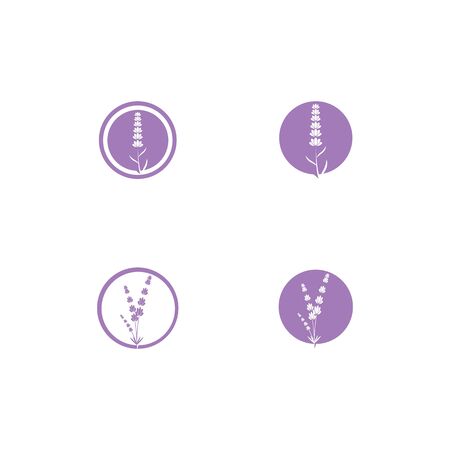Unearthing Ogham: Origins and Historical Context
Journey with me into the verdant heartlands of ancient Britain and Ireland, where mist curls around gnarled oaks and secrets linger in the hush of dawn. Here, beneath emerald canopies and among moss-clad stones, the mysterious script of Ogham first whispered its story. Born in the shadowy centuries of the early first millennium CE, Ogham emerged as more than mere marks—it became a living language woven between worlds, cherished by the Celtic Druids for both its practicality and profound spiritual resonance. These enigmatic strokes—inscribed on standing stones, concealed in woodland groves, and etched onto yew staves—formed a bridge between people and the unseen realms, their meanings cloaked in nature’s own tongue. To walk amidst these ancient markers is to feel the pulse of time itself; each line a memory, each notch a breath from ancestors who believed that every tree held wisdom and every word, power. The presence of Ogham lingers still in the British and Irish landscape—a subtle murmur guiding us back to an age when script was sacred, and every stroke invoked the spirit of the land.
2. The Language of Trees: Ogham and Natural Wisdom
In the mist-shrouded woodlands and hedgerows of the British Isles, ancient Druids perceived the land as alive with spirit and wisdom. Central to their mystical tradition was Ogham—a script not merely etched in stone, but whispered through the leaves and boughs of the sacred trees. Each stroke of Ogham is more than a letter; it is an embodiment of arboreal essence, a portal into the living lore and healing energies woven into Britain’s natural tapestry.
The Ogham alphabet, or Beith-Luis-Nin, encodes twenty primary staves, each intimately linked with a native tree or shrub. These associations are far from arbitrary; they reflect deep reverence for the local flora, whose cycles shaped both the land and those who tended it. As you trace your fingers along these lines—be it on weathered stone or hand-carved wood—you are invited to commune with the subtle teachings each tree imparts.
Ogham Staves and Their Tree Allies
| Ogham Name | Tree | Spirit & Lore | Healing Wisdom |
|---|---|---|---|
| Beith | Birch | New beginnings, purification | Cleansing, renewal, gentle resilience |
| Luis | Rowan | Protection, intuition | Averting negativity, strengthening spirit |
| Nion | Ash | Connection between worlds, growth | Vitality, adaptability, clarity of purpose |
| Saille | Willow | Lunar wisdom, flexibility | Emotional healing, flow with change |
| Huath | Hawthorn | Heart mysteries, threshold guardian | Courage through transformation, protection of home and heart |
The Whispering Grove: Storytelling Through Ogham Signs
To walk among these trees is to enter a living library. Imagine an elder oak sharing tales of steadfast endurance during stormy nights on Dartmoor; or a slender birch gleaming in spring sunlight on Scottish moorland, offering hope after winter’s hush. Each Ogham stave encodes such stories—mystic blueprints inviting us to listen deeply to nature’s voice.
Awakening Intuition through Nature’s Script
The Druids understood that true wisdom emerges when we learn to read between the lines—to sense the pulse beneath bark and root. By working with Ogham as both language and divinatory tool, modern seekers can rekindle this ancient bond: drawing guidance from local woodland spirits and remembering that every leaf, twig, and rune holds a message tailored by place and season. In this way, Ogham becomes not just an alphabet but a living oracle—rooted in earth, whispering truths across centuries.

3. Script and Symbol: The Artistry of Ogham
To wander through the ancient woodlands of Britain and Ireland is to sense echoes of a time when every tree whispered secrets, and every stone bore silent witness to mysteries untold. It is within this verdant tapestry that the Ogham script emerges—not merely as an alphabet, but as an art form infused with spiritual intention and ancestral wisdom. Unlike the flowing curves of Latin or the angular runes of the Norse, Ogham’s stark lines are etched vertically, most often along the edge of standing stones or wooden staves, each mark aligning with a particular letter and, in many traditions, a sacred tree.
What sets Ogham apart visually is its profound simplicity. The script consists of a series of straight lines—sometimes singular, sometimes grouped—cut either across or beside a central stemline. This linear presentation feels both minimalist and deeply primal, as if it channels the very pulse of nature through its strokes. Each character, while unassuming at first glance, radiates meaning; for instance, the single stroke for ‘B’ (Beith, or Birch) symbolises beginnings and purification—a message encoded not just linguistically but spiritually.
Inscribing Ogham was never a casual act. Druids and learned poets would carve these marks with reverence, often in sacred groves or upon boundary stones where worlds were believed to meet. The act itself was a ritual—a dialogue with the unseen realms—intended to invoke guidance or protection. The vertical orientation of the script mirrors the trunk of a tree rising from earth to sky, grounding messages in the material world while reaching upward toward divine inspiration.
Subtle symbolism abounds in Ogham’s artistry. Each line does not only denote sound but embodies qualities associated with its corresponding tree: strength, flexibility, endurance, or transformation. To read or create Ogham is to enter into communion with nature’s cycles—a tradition still honoured by those who seek wisdom among the British Isles’ ancient oaks and yews. In this way, Ogham offers more than communication; it is an invitation to see the sacred woven into even the simplest marks.
4. The Druidic Way: Magic, Mystery, and Ritual
Glance through the ancient mists of Albion, and you’ll sense the enigmatic presence of the Druids—keepers of secret wisdom, veiled in ceremony and reverence for the land. For them, Ogham was far more than a script; it was a living vessel, brimming with potency and purpose, woven seamlessly into their sacred practices. To walk the Druidic path was to journey between worlds, and Ogham served as a bridge—an alphabet whose lines echoed both in ritual spaces and deep within the whispering woods.
Imagine a moonlit clearing in an ancient British grove, where the Druids gather in quiet anticipation. Here, Ogham staves—carefully carved from native trees—are drawn from a cloth pouch, each one inscribed with a symbol that holds a story. These staves are not mere objects; they are conduits for dialogue with the Otherworld, employed in rites of passage, seasonal celebrations, and divinatory consultations.
The ways in which Ogham infused Druidic ritual can be glimpsed through three core aspects:
Aspect |
Ritual Use |
Spiritual Purpose |
|---|---|---|
Sacred Carving |
Inscribing Ogham onto wood or stone during ceremonies | Imbuing physical objects with intent and invoking ancestral energies |
Divinatory Casting |
Casting Ogham staves or sticks to receive messages from the unseen realms | Seeking guidance on personal or tribal matters; connecting to nature’s wisdom |
Incantation & Chanting |
Reciting Ogham letters aloud in ritual circles or solo meditations | Activating spiritual vibrations and aligning with the elemental spirits |
This mystical interplay transformed every ritual into a tapestry of magic and meaning. In these ceremonies, the very act of drawing an Ogham stave or tracing its form upon the earth became a means of conversing with spirits—both those dwelling within the ancient forests and those lingering beyond the veil. For the Druids, Ogham was not simply read; it was felt, embodied, and honoured as a living link between their world and that which lies hidden in shadowy realms.
5. Divining with Ogham: Modern Uses and Practices
Step into contemporary Britain, and you will find the ancient whispers of Ogham alive in quiet woodlands, bustling city flats, and sunlit kitchen tables. Today’s seekers are rediscovering this mystical script not just as a relic of Druidic lore, but as a living tool for divination and personal growth. The practice often begins with a set of hand-crafted Ogham sticks or staves—each inscribed with a unique character linked to native trees. These simple yet potent tools are gathered in a pouch or laid upon an altar, their tactile presence inviting both reverence and curiosity.
In modern Ogham divination, the process is both ritualistic and intuitive. A seeker may begin by centring themselves—perhaps lighting a candle or reciting a simple blessing rooted in the old ways. With a question or intention clear in mind, they draw one or several sticks from the pouch, letting fate—or spirit—guide their hand. Each stave carries the energy of its associated tree: Birch for new beginnings, Oak for strength, Yew for transformation. The messages gleaned are interpreted through a blend of traditional meanings and personal insight, weaving together the wisdom of the land with one’s own inner knowing.
This practice is not limited to countryside mystics; urban dwellers too find solace in Ogham’s gentle guidance amid the rhythms of daily life. Whether used for major decisions or quiet moments of reflection, Ogham offers a uniquely British flavour of divination—one that honours both ancestral roots and modern realities. Workshops in community centres, lively discussions at local moot groups, and solitary readings beneath ancient oaks all reflect a vibrant resurgence. For many, Ogham has become more than an oracle—it is a bridge between worlds, connecting present-day seekers to the timeless spirit of the Isles.
6. Ogham Today: A Living Legacy
In the quiet corners of modern Britain, where mist lingers over ancient woodlands and city dwellers seek deeper meaning, Ogham has found its way back into the collective consciousness. No longer confined to the mossy stones and weathered manuscripts of the past, this mystical script breathes anew in our everyday lives, inviting us to touch the soul of our land and ancestry.
The Revival of Ogham in Creative Arts
Across bustling London markets and tucked-away craft fairs in Cornwall or the Scottish Highlands, artisans delicately inscribe Ogham onto pendants, rings, and talismans. Each piece is more than mere adornment; it’s a whispered connection to Britain’s druidic roots, a secret language that speaks of trees, seasons, and subtle energies. Wearing Ogham jewellery becomes an act of remembrance—a soulful nod to the wisdom woven through our heritage.
Ogham Tattoos: Marking the Journey
The resurgence doesn’t end with wearable art. Many seekers now choose to ink Ogham symbols upon their skin—each line and notch thoughtfully selected for personal meaning. Whether it’s a tribute to strength (Duir, the Oak), new beginnings (Beith, the Birch), or love (Ruis, the Elder), these tattoos are more than decoration; they are living vows etched close to the heart, quietly guiding their bearers on life’s winding path.
Reconnecting with Ancestral Wisdom
This revival is not simply aesthetic. In workshops from Glastonbury to Edinburgh, groups gather to study Ogham’s lore and divinatory traditions. Meditating on each letter’s tree spirit or drawing ogham staves for guidance offers a tangible link to ancestral ways of knowing—a counterpoint to our fast-paced digital age. In every practice, there lies a gentle invitation: slow down, listen to the land, remember who you are.
As Ogham weaves itself into contemporary British culture—whether carved on wood, inked on skin, or spoken in circles beneath ancient oaks—it serves as both anchor and compass. Its presence reminds us that magic persists in our midst: in the hush between raindrops on moorland grass, in the stories we share by candlelight, and in our ongoing quest to rediscover what it truly means to belong.

